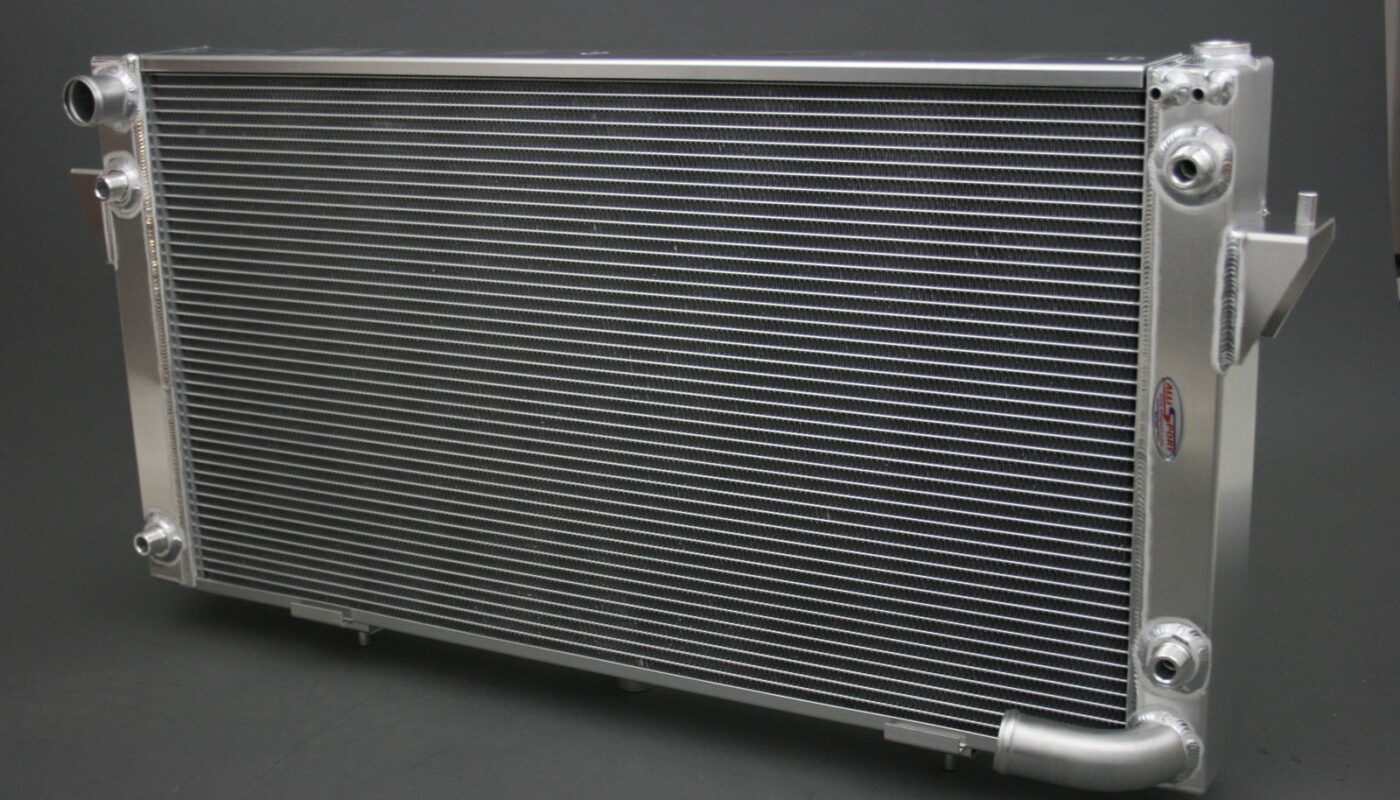The automotive radiator is one of the most crucial cooling system components in a vehicle. Its main function is to cool down the hot coolant that circulates through the engine, preventing overheating.
What is an Automotive Radiator?
An Automotive Radiator is a heat exchanger device that is mounted in front of the engine compartment. When hot coolant from the engine enters the radiator through inlet tubes, it passes through a series of tubes and fins. As air is pushed through the radiator fins by the fan, heat from the coolant is transferred to the air through convection. This cools down the coolant before sending it back to the engine through outlet tubes, keeping the engine from overheating.
Radiators come in a variety of shapes, sizes, and materials based on the make and model of the vehicle. Most modern radiators are made of aluminum or plastic with copper/brass tubes to efficiently conduct heat away from the coolant. Advanced radiators also have inlet and outlet tanks to direct coolant flow through multiple passages.
How Does a Radiator Function?
To understand how a radiator works, let’s look at the engine cooling system process step-by-step:
– Hot coolant circulates through the engine block and absorbs heat from various engine components during operation.
– This hot coolant then passes through the radiator inlet tubes and fins where it releases heat to the passing air through thermal conduction.
– As the hot coolant loses heat, it cools down and its temperature lowers considerably before exiting through the radiator outlets.
– The now cooler coolant re-enters the engine through hoses and pump to repeat the circulation and cooling process continuously.
– A radiator fan pushes air through the radiator core and fins to maximize surface area for heat transfer from coolant to air.
– Thermostats regulate coolant flow and ensure the engine reaches optimal operating temperature quickly.
So in summary, a radiator uses convection to efficiently transfer engine heat to the air stream, maintaining safe operating temperatures. Without this constant heat rejection, the engine would soon overheat and seize.
Importance of Automotive Radiator Maintenance
Given its critical function, the radiator requires routine maintenance checks to perform effectively over many years. Here are some key points of radiator care:
– Regularly inspect for leaks, damages or loose connections and fix immediately to avoid coolant loss.
– Flush the radiator and change coolant as recommended in the manual to remove rust and debris buildup inside.
– Check rad fins are not blocked or bent out of shape which can reduce airflow and heat dissipation.
– Ensure fan operation by testing electronics or belts connecting it to run optimally.
– Check coolant level regularly when engine is cold and top up if needed.
– Treat blocked or aging radiators professionally through fin repair kits or replacement if necessary.
Neglecting routine radiator maintenance can seriously impact the engine cooling system through reduced heat rejection ability. This can potentially lead to overheating issues, damage components and expensive repair bills down the line. With proper care and servicing, a radiator can easily last well over a decade.
Common Radiator Problems and Symptoms
Here are some common problems vehicle owners may face related to a failing radiator:
– Coolant leaks – Check for puddles beneath car or low coolant level. Leaks require inspection and seal replacement.
– Overheating engine – Monitor temperature gauge rising above normal after use. Could indicate blocked radiator internals or failed cooling components.
– Loss of heating in cabin – Heater core inside radiator may be clogged reducing heat distribution inside vehicle.
– Noise or vibration – Damaged radiator foundations, mounts or fan connection producing abnormal noise on operation.
– Reduced air conditioning – Faulty radiator obstructing condenser resulting in inefficient air conditioning system.
– Red coolant residue – Sign of rusting inside indicating time for flush and coolant refresh to remove corrosion buildup.
Besides catching leaks early, being aware of warning signs like unstable temperature readouts or lack of heat output can help diagnose underlying radiator problems at a manageable stage. Prompt repairs avoid extensive engine damage down the road.
Radiator Replacement – When is it Necessary?
While properly maintained radiators can last well over a decade, there comes a time when replacement becomes necessary rather than extensive repairs. Here are some indications it may be time for a new radiator:
– Excessive coolant leaks despite sealing attempts due to cracked tanks or corroded seals.
– Completely blocked core with inability to restore proper airflow even after professional cleaning.
– Severely damaged or rusted radiator core with leak points too numerous to seal up individually.
– Age-related deterioration of plastic tanks or bent core with compromised structural integrity.
– Appearance of transverse cracks in exterior surface affecting both sides of radiator core.
– Combination repairs exceeding 60% of new radiator cost making replacement more economical.
Timely radiator replacement prevents undesirable downtime and repair bills from potential overheating damage. It’s worth investing in an OEM quality part for lasting performance and value. Proper installation is also important for reliable operation.
The automotive radiator performs a crucial role in keeping engines operating at optimal temperatures. With regular maintenance checks, prompt repairs, and eventual replacement when needed, vehicle owners can significantly extend their engine and cooling system’s usable lifetime. Proper radiator care pays off through reliable motoring experiences with fewer unexpected breakdowns.
*Note:
1. Source: Coherent Market Insights, Public sources, Desk research
2. We have leveraged AI tools to mine information and compile it



